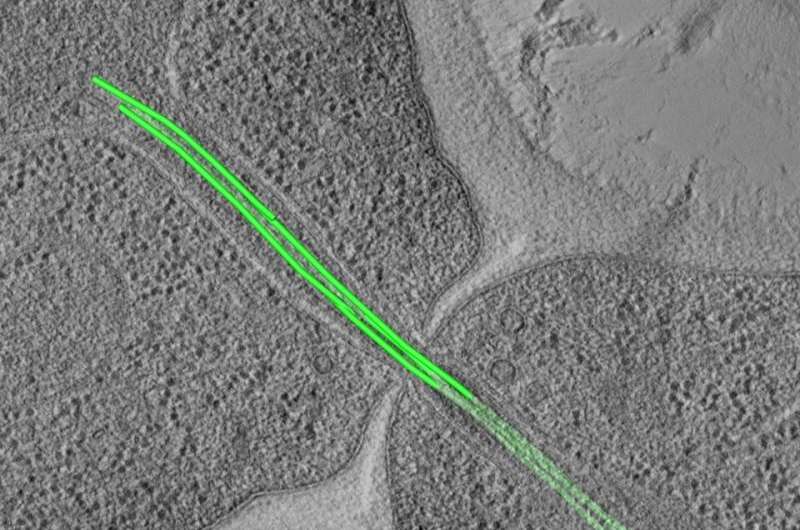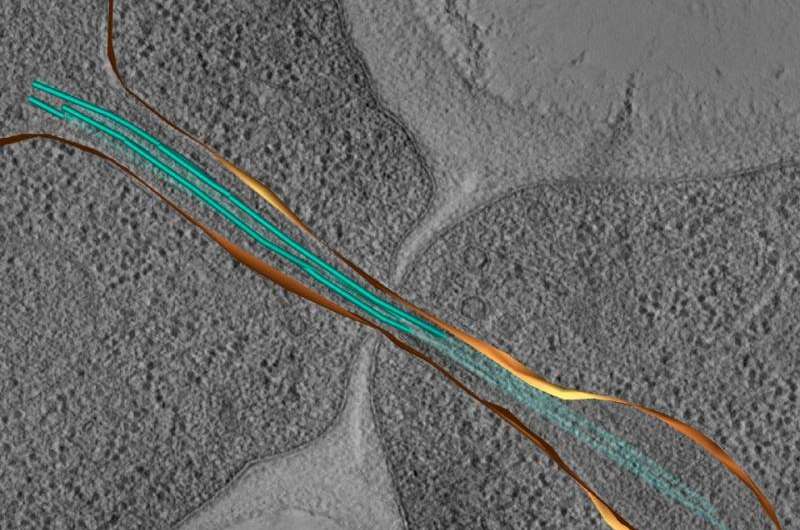Cells check DNA segregation at the end of their division

The cells in our bodies are constantly dividing. From embryonic development to adult life, cell division is necessary for tissue growth and renewal. During division, cells must duplicate their genetic material (or DNA) and ensure identical copies are passed along to the daughter cells. The entire process must work perfectly. If not, the next generation of cells will not have the genetic material necessary to function properly. Their role becomes especially relevant in situations in which cells proliferate rapidly, like embryonic development or tumor proliferation.
The team, led by Manuel Mendoza at the Centre for Genomic Regulation, is studying cell division; specifically, the moment in which the genetic material is distributed and the cell divides in two. In their prior work, Dr. Mendoza's team had already outlined some of the mechanisms that orchestrate this process. Now, in a study published in Nature Cell Biology, they describe the importance of coordinating cell division with the separation of DNA.
In normal cell division, each DNA molecule is duplicated into two identical strands. These strands separate and migrate toward opposite poles of the cell. The cell's mid-section, or equator, then contracts and splits into two halves, each with a copy of the DNA. Occasionally, due to problems that arise during DNA duplication, connections can be created between the strands that impede their separation. As the migration toward the poles takes place, these connections hold them together, leading to what we know as "DNA bridges" or "chromatin bridges", as they connect the two halves of the dividing cell. The DNA bridges are a severe threat to the cell; during the division, the cell could sever them and damage the genetic information passed on to the daughter cells. These bridges are a source of potential genetic instability and are frequently found in cancer cells.
The work of Dr. Mendoza's group, conducted with yeast cells, shows that when there are problems with DNA replication, the chromatin bridges send an alarm signal that temporarily halts the cell division process. This blocks the breakage of the bridges, giving them time to stop their separation without breaking, before the cell splits normally. "Our research is shedding new light on this process, by revealing that the signaling pathway we call NoCut is important to prevent damage to the DNA when there are problems in its replication," states Dr. Mendoza. "We have also identified that some types of chromatin bridges, which are not originated by replication problems, surprisingly generate no alarm signals. Understanding why cells detect certain DNA separation defects and not others could be important for the prevention of damage to the genome that occurs in different human pathologies, such as cancer," concludes the researcher.

More information: Nuno Amaral et al. The Aurora-B-dependent NoCut checkpoint prevents damage of anaphase bridges after DNA replication stress, Nature Cell Biology (2016). DOI: 10.1038/ncb3343
Journal information: Nature Cell Biology
Provided by Centre for Genomic Regulation



















